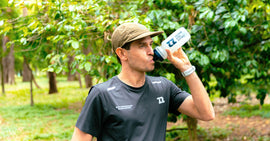In the world of long-distance running, especially marathons, kilometer 35 holds a symbolic place. Anyone who has faced the 42.195 meters knows: this part of the race is one of the most challenging — both physically and mentally.
While covering the Boston Marathon, one of the most traditional races in the world, it became clear why this segment is so iconic. Positioned at a strategic point in the course, km 35 is not just a number: it represents a critical transition. For many athletes, it’s where the body begins to falter — and where the mind must take control.
What happens at km 35?
From a physiological standpoint, this is typically when glycogen stores begin to run low in most runners. Glycogen is how the body stores carbohydrates in the liver and muscles. Foods like pasta, bread, fruit, or energy supplements are converted into glucose in the blood, which is then stored as glycogen to be used as fuel during exercise.
In a marathon, these reserves are gradually depleted. Once they’re gone — especially without a proper energy replenishment strategy — the body enters a deficit state. The result is what many runners refer to as “hitting the wall”: the legs feel heavy, the pace drops, and simply continuing becomes a monumental challenge.
The Boston challenge
In the Boston Marathon, this moment is even more demanding. The famous Heartbreak Hill, located at kilometer 32, already drains much of the runner’s physical reserves. By the time they reach km 35, athletes are not only dealing with natural energy depletion but also the accumulated strain of a hilly course.
It’s at this point that the psychological aspect becomes even more intense. The body shows signs of exhaustion, and yet the finish line is still far enough to feel out of reach.
The turning point
As tough as it is, km 35 can also mark a turning point. Runners who have trained well — with proper workouts, nutrition strategies, electrolyte replacement, and mental preparation — can hold their pace or even gain ground. It’s the moment when the body wants to quit, but the mind stays strong. For many, this is when the real race begins.
Passing other runners in this stretch can have a highly motivating effect. The sense of achievement grows with every meter. It’s where many stop just “finishing” the marathon — and start truly conquering it.
More than just legs
Kilometer 35 demands respect. It’s where many face their greatest challenges.
The difference lies in preparation: training consistently, eating smart, and understanding that a marathon isn’t won with legs alone. You also need heart — and a strong mind.


